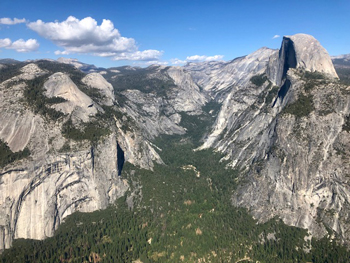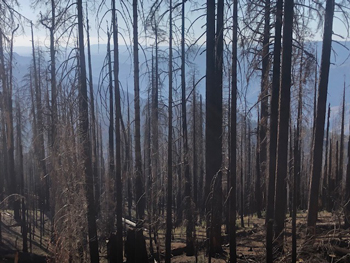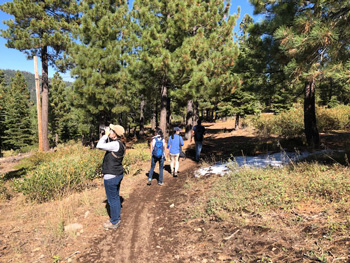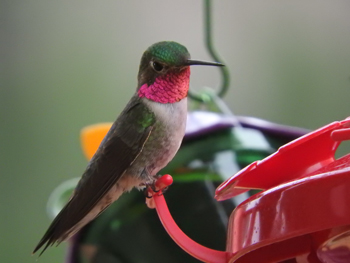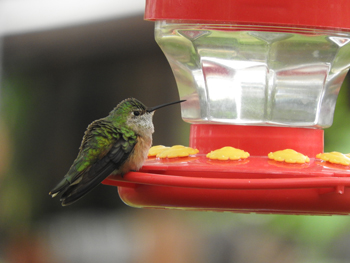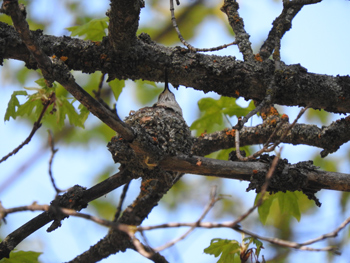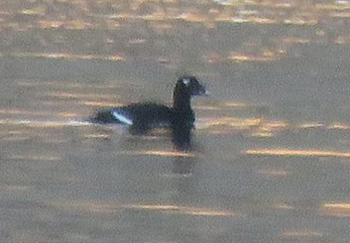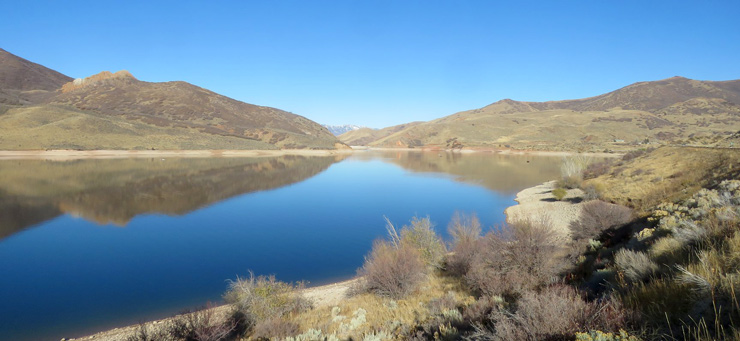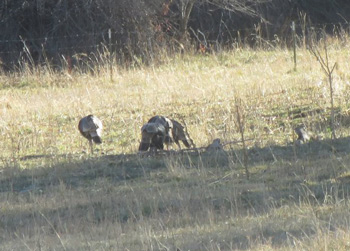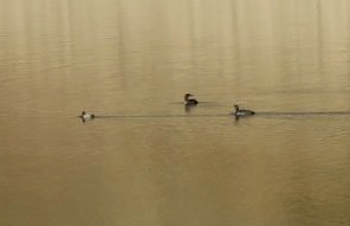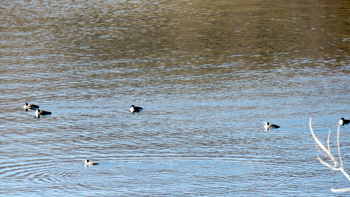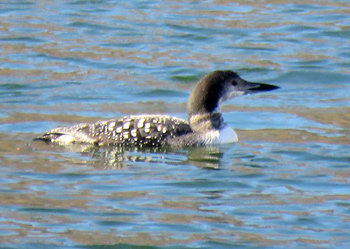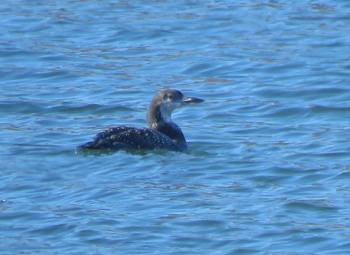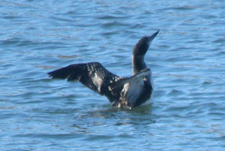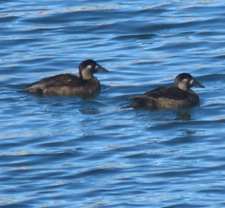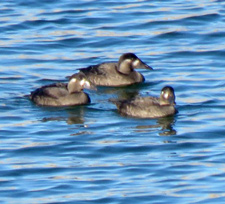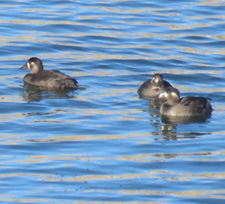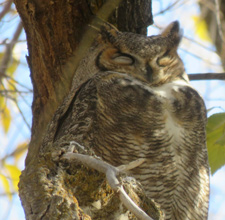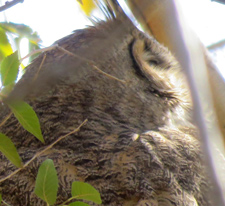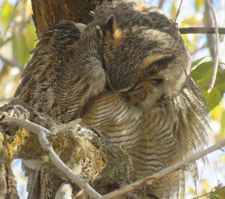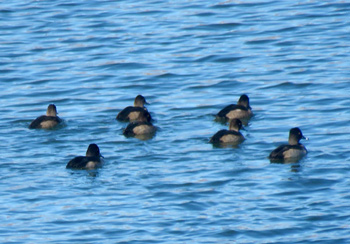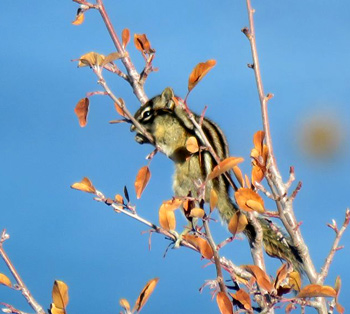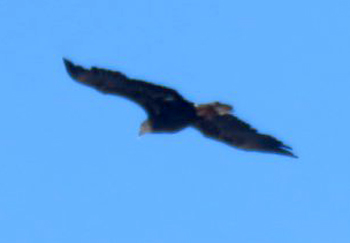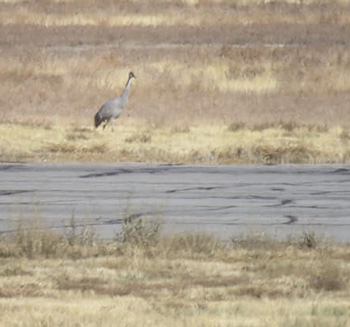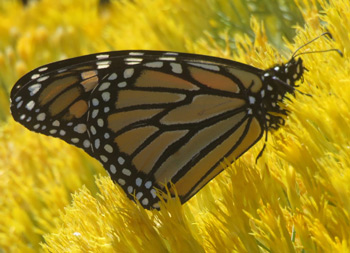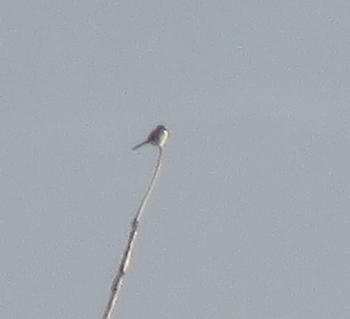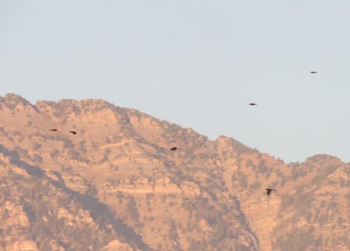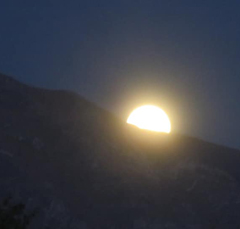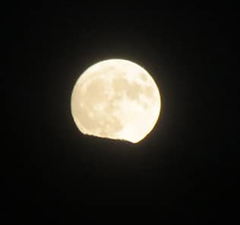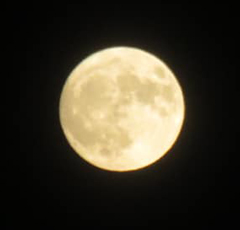|
|
||||||||||||||||||||||||||||||||||||||||||||||||||||||||||||||||||||||||||||||
Utah County Birders
Newsletter
|
||||||||||||||||||||||||||||||||||||||||||||||||||||||||||||||||||||||||||||||
 |
Contents
Monthly Meeting
Upcoming Field Trips
Captain's Log
Bird of the Month
Field Trip Reports
Printable Version
Thursday, Nov. 21st, 7 PM
(Note: A different night than usual)
at the Monte L Bean
Museum in Provo, UT
Map to Museum
Danielle Finlayson, a graduate student at BYU, will give a presentation on her graduate work "Golden Eagle Use of Water Features in the West Desert of Utah". Danielle has been analyzing photos from a network of game cameras at various water sources across the west desert to learn how eagles and other species use water sources in the desert. Come learn about some of the cool things she's found and get close and personal with the golden eagles of the West Desert!
November 23rd, 8 am
A Wild Turkey Trot
Saturday November 23, 2019 meet at 8 am at Provo Sam's Club parking lot, north of the gas pumps. We will start at South Fork searching for gobblers! And then trot over to Diamond Fork, Loafer Canyon, Payson Canyon and Santaquin Canyon. We'll try to keep a running total on Facebook. Join us for part of it or come enjoy it all!
|
Utah County Birders
Captain’s Log - November 2019 Text and Photos by Keeli Marvel |
||
Hello
all my fellow bird nerds out there! Thank you to all who helped out with the
October meeting! I'm sorry I couldn't be there, but it sounds like it was a
great meeting. Thank you to those who came out for our Big Sit as well. It
was a great time!
As I mentioned in last month's article, a few
weeks ago I got to do a quick trip to Yosemite and Reno and picked up
another lifer bird species. Terri and I had a wildlife conference to attend
in Reno for work, so we left a few days early and spent 3 nights camping in
Yosemite prior to the conference. While in Yosemite, we did a bunch of
hiking, checked out the Tuolumne Sequoia grove, gazed our sights up the
magnificence of El Capitan and Half Dome, and I picked up my lifer
WHITE-HEADED WOODPECKER! We hiked down into the Tuolomne Grove the first
night of our trip and heard their high fast woodpecker whinny but couldn't
ever pinpoint a bird in the fading light, but our second day in the park
after a drive up to Glacier Point, we stopped in a burned area to try and
find Black-backed Woodpeckers (which would have been another lifer had we
found one), but found four species of woodpecker, including my lifer
WHITE-HEADED WOODPECKER! We tried several other places for Black-backed
woodpeckers to no avail, but the park was beautiful, and I was in awe of El
Capitan and the scenery in the park and the climbers that were tiny specks
on the faces of the cliffs. |
||
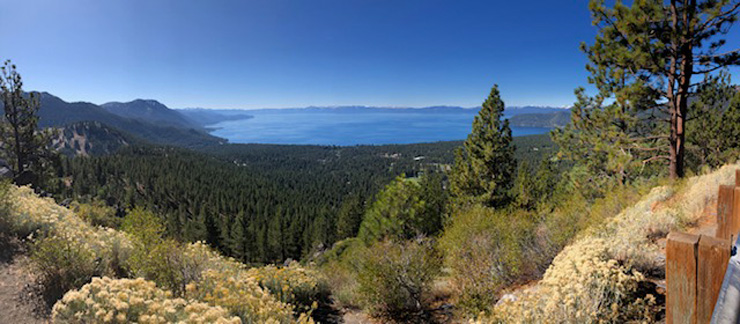 Lake Tahoe |
||
We stopped for lunch at the
Donner Party Picnic Area (no gruesomeness intended but a little bit of a
laugh over that one), and highlights there included more nuthatches, more
grosbeaks, CASSIN'S FINCHES, RED CROSSBILL, and a CLARK'S NUTCRACKER. One of
our lifer goals for the day was MOUNTAIN QUAIL, so as a last ditch effort we
drove up Alder Creek road to the Tahoe Donner Cross Country Ski Center and
hiked a few miles along the ski trails, but did not have any luck locating
one. It was a beautiful day for birding and for hiking though and we got to
take in the views of Tahoe and the mountains around Truckee. |
||
|
Broad-tailed Hummingbird
(Selasphorus platyercus)
by Jeremy Telford |
||||
|
I find myself thinking about all the incredible birds I would love to see if I could travel. Imagine seeing a wild ostrich in Africa, or the ancestors of the domesticated chicken in India, the Kiwi of New Zealand or the various populations of penguins in Argentina or Antarctica. Maybe a phoenix if I were visiting Hogwarts (as long as I’m dreaming, right?). There are amazing birds with all kinds of amazing adaptations living all over the world. Thinking of these birds I can sometimes forget how amazing the birds are that I can find locally. Birds that if I lived in Africa or New Zealand (or Hogwarts) I would be dreaming of one day seeing. I am talking about a group of birds that can only be found in the Americas. Our own unique and incredible hummingbirds. Of the over 300 species of Hummingbird only 17 live in North America, and only 4 (maybe 5) are very common to Utah. Hummingbirds are known for being small, much like my wife. The smallest bird in the world is the Bee Hummingbird topping out at a little over two inches, my wife tops out at five feet. Hummingbirds have to be small for their mode of flight to work, my wife, well she can’t fly but it is fun to watch her try. In some ways those little hummers are giants. Hummingbirds have a bigger hippocampus than any other bird. Some have a hippocampus as much as 10 times larger than birds with comparable brain size. (For clarification the hippocampus is a part of the brain, not a place where hippopotamuses gather for higher learning.) The hippocampus in the brain deals with memory, especially spatial memory, and helps a hummingbird remember feeding grounds and flowering times. This includes remembering places that put up feeders and when people put them out. Hummingbirds are not long lived. Most hummingbirds live an average of 3-5 years, but the record recorded life span was a Broad-tailed Hummingbird that was tagged in 1976 in Colorado and later observed in 1987 making this particular hummingbird over 12 years old. A Broad-tailed Hummingbird has a heart that beats an average of 1,200 times a minute. That is 20 times a
second, or 72,000 times an hour if you want to go the other way. They weigh only 2-3 grams, roughly the weight of a penny. It takes five Broad-tailed Hummingbirds to equal the weight of one Black-capped Chickadee. It would take 1,170,000 Broad-tailed Hummingbirds to equal the weight of a Hummer automobile. A third of a hummingbird’s weight is in its massive chest muscles that it uses for flight. It needs such massive muscles to keep those wings beating an impressive 40-50 times a second. Their wings are also built differently than other birds. The Humerus, Radius, and Ulna bones in most birds are elongated (these bones are like the arm in a human) while the Metacarpus, Phalanx and Ulnare bones are relatively small (think hands for a human reference). This is just the opposite for a hummingbird. They fly with tiny “arms” and huge “hands.” It amuses me to think of them going around flapping their hands really fast. Male Broad-tailed Hummingbirds have special outer primary feathers that produce a trilling sound. They gradually wear down over time and the trill fades over time to be inaudible by midwinter. They are molted and regrown before the next breeding season. Broad-tailed Hummingbirds reside up in the mountains where temperatures can dip below freezing during the night. If the temperature goes lower than 44 degrees they will enter a state of torpor and lower their own
temperature to about 54 degrees. Hummingbirds typically regulate their temperature to be just a little above 100 degrees while awake. Their heartbeat also slows from 1200 beats per minute to roughly 50 while in torpor. This is less than 1 beat per second, or 3000 per hour if you want to go the other way. Female Broad-taileds will take advantage of the insulation of their nests to conserve heat while male Broad-tailed Hummingbirds will fly higher up the mountain out of the cold pockets that collect lower down saving their energy by as much as 15 percent. Personally I think the real reason for the nightly migration is that males keep “man caves” up there and just use the cold as an excuse to get away and watch sports, but this particular theory does not seem to be supported by science, or common sense. The females build nests on horizontal branches in trees anywhere from eye level to about 20 feet high. They build nests out of plant material and spider silk and then cover the outside with moss, bark, and lichen to help
camouflage it. Building the nest out of such material allows it to be flexible and expand with growing young. They probably need the extra room because the young can’t keep their space clean and half the nest ends up being toys that they refuse to pick up. The tiny eggs, they usually lay two, incubate for about 16 days, then from hatching to first flight is generally about 3 weeks. It is possible that this process is so quick because the mom is just fed up with picking up those toys and can’t wait to have them out of the nest. A number of species of hummingbirds have been found to intentionally nest near hawks. They do this as a way to protect their eggs and chicks. When hawks are nearby jays and other egg or chick stealing birds tend to perch higher, hopefully out of the line of sight of the raptors. Since hummingbirds nest lower than the hawks it keeps the birds away that would do them the most harm. It also keeps down the number of solicitors they have to deal with. Broad-tailed Hummingbirds typically breed at elevations up to 10,500 feet. They can visit the valley but you will have more luck finding them up in the hills and mountains. They arrive in Utah County starting in April and leave by mid-October, but peak times to see them are May through August. If you want to find one in the middle of winter in Utah try the Bean Museum on BYU campus, they might have one, but no guarantees. Broad-tailed Hummingbirds are probably the second most commonly seen hummingbird in Utah. Down in the valley we typically get Black-chinned Hummingbirds to our feeders but we can get the occasional Rufous and Broad-tailed as well. Here are some key points to help you identify them in the wild. The easiest way is to listen. The loud trill produced by the male of the species during mating season is very distinct and plenty loud. You will often hear the bird before seeing it. The male also has a beautiful rose pink or rose red gorget when seen in the right light. The female gorget is often white, flecked with bronzy green, but they may have a few of those rose red spots as well. They are also considered big headed for a hummingbird (that is a physical trait, not a personality judgement). There may be some blush color along the flanks of the bird and some rufus in the tail. The Broad-tailed Hummingbird also has a complete eyering and often a little white line under the eye, but those field marks can be hard to see sometimes. As with most birds individual hummingbirds may vary so it is good to identify them based on a number of field characteristics rather than just one. Except for that trill. If you hear that you are pretty much good. Or that rose-red gorget, that is also a clincher. Okay, basically if you see a female then try to use a number of field characteristics. The males flaunt their identity. If you want to bring hummingbirds to you a hummingbird feeder is a great way to attract these birds. While we typically get Black-chinned at our place we see a few Broad-tailed and Rufous Hummingbirds as well. When choosing a feeder here are a couple of things you might think about. Feeders should be cleaned regularly. The sugar water “nectar” is susceptible to growing mold or fungus that can cause a hummingbird’s tongue to swell rendering it incapable of eating. This condition is called Hummers Candidiasis and it is horrible. The hotter the weather the more often the “nectar” should be changed and the feeder cleaned. Because of all this cleaning it is nice to get a feeder that can be taken apart and cleaned easily. If the neck of the feeder is narrow use a bottle brush to get it done. Quoting one of my books, which quoted another person they identified as ‘someone,’ “Hummingbirds like any color, as long as it’s red.” The jury is still out on whether or not red food dye in hummingbird “nectar” is harmful to them, but considering the red coloring on almost all hummingbird feeders is enough to attract them alone there is really no reason to risk it. To make hummingbird “nectar” boil one part sugar to four parts water. Boil the water and add the sugar. Stir until the sugar is dissolved. Allow it to cool to room temperature before adding it to the feeder. Do not let your kids drink it. Trust me. If you make a large batch extra can be stored in the fridge until needed. Of course if you don’t want to be cleaning a feeder all the time consider planting some flowers. The Backyard Bird Feeder’s Bible has thirteen species it claims are all but guaranteed to bring in the Hummingbirds. Of those the Penstemons and many of the salvias do well in Utah. When making your final decision on what to plant, remember that not all flowers produce a lot of nectar, even if they are red, and you can only fool those hummingbirds for so long before they abandon you. So on those days when you miss the odd Blue-footed Booby or Fulvous Whistling Duck that may pass through Utah remember that even some of our more common birds are the envy of birders worldwide. One of which is a bird that one 16th century Spaniard found so unreal he “would not dare tell of it if others had not seen them also…”
(That bird was a
hummingbird in case you weren’t following that from the rest of the article.)
Books The Genius of Birds, Jennifer Ackerman, Penguin Books, 2016 Zoobooks Hummingbirds, Timothy Levi Biel and Marjorie Betts Shaw, Wildlife Education Ltd, 2001, Volume 18 Number 4 Backyard Birdfeeder’s Bible, Sally Roth, Rodale, 2000
|
||||
|
Internet
|
|
|||
|
|
||||
|
|
||||
|
26 Oct 2019
Northeast
Reservoirs Field Trip
|
||||
| Seven Birders headed out from Orem about 7am. We stopped at Little Dell Reservoir first to see the Drake White-winged Scoter...what a beauty!!! We also saw Common Mergansers, a Common Loon, American Kestral, Black-billed Magpies and some house finch. Then went over the Big Mountain Pass towards East Canyon Reservoir. We stopped for a bit on top and tried to call in a Northern Pygmy Owl...no owl but lots of Mountain Chickadee's, a choir of Red-breasted Nuthatch, Common Raven's, Steller's Jays and Cedar Waxwings. |
|
|||
|
|
||||
|
We drove a little bit up Mormon Flat Road and it was pretty boring. We did see some Wild Turkey's as we came out. We also met Weston there and now with him as our personal Morgan County guide he took us to see twenty-two Common Loons, a Redhead, a couple American Wigeons, a few Ring-necked Ducks, Eared Grebe, Mallards, a Lesser Scaup and three Surf Scoters! We also saw Black-capped Chickadee, House Finch, Red-tailed Hawk, Ring-billed and California Gulls, Great Horned Owls a couple Northern Flicker's, Canada Geese, and some Red-winged Blackbirds. On the way towards Henefer we saw a Golden Eagle. |
|
|||
|
|
|
|||
|
|
||||
|
|
||||
|
|
||||
|
|
|
|||
|
|
|
|||
| |
||||
|
Big Sit - Provo
Airport Dike
|
||||
|
Field trip report...a
story only a BIRD NERD could love! We did it! Beginning at 605am Jeremy started off our Provo Airport Dike BIG SIT 2019 in Utah County. I arrived at about 645am and we set out our circle. The temperature was a freezing 24 degrees! BRRR! |
||||
|
Mind you we were not alone there were truckloads of duck
hunters on that south west corner. One has never been more happy to see a Yellow-headed Blackbird! Bird species # 62!! Joellen and Hana arrived a few minutes later just before dawn broke, and World War 3 began. Our first bird was calling in the dark, a Red-winged Blackbird and then we saw some Mallards. We then had Song Sparrow, Green-winged Teal, Pied Billed Grebe, Califirnia Gull, Ring-billed Gull and Snowy Egrets. Cliff joined us, then Keeli showed up with the promised muffins. Glazed Carrot-Apple-Orange....YUM! Jo brought all sorts of yummy treats too and Gary and his dad brought over Biscuits and Gravy. We were living it up! |
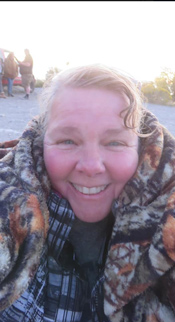  |
|||
|
Freezing with a smile |
||||
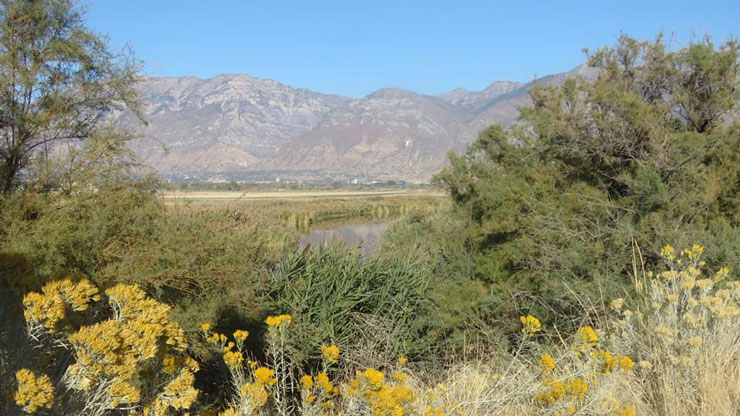 |
||||
|
A few more birders joined us. Kaylene, Alonna and Kathleen. With them we saw Northern Flicker, Ring-necked Pheasant, Clark's Grebe, American Robin, American Coot, Downy Woodpecker, American White Pelican and Marsh Wren. Shortly following was a Virginia Rail, he continued to call almost on the hour all day! We had Northern Harrier, House Finch, Ruby-crowned Kinglet, European Starling, Red-tailed Hawk, American Goldfinch, DC Cormorant, Canada Goose, Barn Swallow, Northern Rough-winged Swallow, Common Goldeneye, Black-capped Chickadee, Dark-eyed Junco, Yellow-rumped Warbler, Franklins Gull, Western Meadowlark, Mountain Bluebird, White-crowned Sparrow, Eared Grebe, Blue-gray Gnatcatcher and a flyover Blue-winged Teal!!! We also saw Belted Kingfisher, Northern Shoveler, Gadwall, Tree Swallow, American Pipit, Great Blue Heron and Cedar Waxwing, Steve and Amanda showed up around 1100am, about a half hour later Stephanie, Dave and Paul arrived. I had just asked Cliff if he had seen a Ruddy Duck, when Amanda said, "hey mom what is that diving?" It's a Ruddy Duck! Then she heard Sandhill Cranes just as we saw them. We heard a American Crow and a Black-billed Magpie. which later showed up, Stephanie spotted a Common Raven, then Cliff added a couple American Avocets. |
||||
|
|
||||
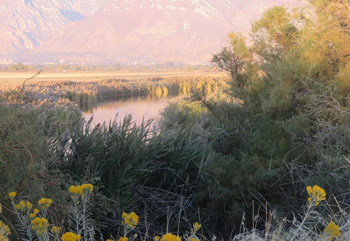 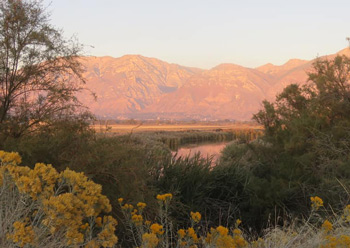 |
||||
|
A little later -- it just got better! |
||||
| About 1200pm Jeff Cooper showed up, and we all know he loves accipiters! We had what I thought was a Northern Harrier dive into the marsh as I saw a flash of white in the tail. Jeremy saw it perch on the fence...not typical for a harrier. So Jeff got out of the circle to inspect and to show it to Deloy and Cooper found a Cooper's Hawk! The Coop flew off, so Jeff followed it north down the dike. Then we heard him yell Sharpie! A beautiful Sharp-shinned Hawk flew over us! Then we heard and saw Killdeer. When Jeff returned we heard a different call, Jeff recognized it as a Yellowlegs! Shortly after he saw two Greater Yellowlegs fly out of the moat. The birds took a siesta in the afternoon. Kayla showed up around 237pm and the birding was really slow so we killed some time chasing butterflies, dragonflies and jumping spiders. I decided to take a small break and on my way out saw a female American Kestral, I called Jeremy and Cliff to have them be on the lookout. A jet took off and up flew the female American Kestral! They also added California Quail and a Western Grebe putting us at 58! Joellen and I returned and we all knew the all time record of 61 was in our sights. Cliff found a American Wigeon a lifer for Corey, thank goodness her mom brought her over! A couple Wilson's Snipe flew by #60! Out of the circle I saw off to the south a snag with a small bird on top. I snapped a shot with my SX60 and it was a Loggerhead Shrike, now to see him within our circle. The poplars were too tall looking south even standing on a chair. Just then Sam and Megan pull up. We tried to have them park their truck in the circle but it wouldn't start, so Jo pulled hers into the circle and Cliff and I climbed in. With the extra height, Cliff spotted the shrike through the trees #61!!! We tied the record!!! |
|
|||
|
It began to slowly get darker and the wind kicked up and it was cold. We
bundled up and soon a group of Yellow-headed Blackbirds flew by. I
screamed and hollered and carried on...#62!! We had broken the record! But
were we done? NO! We then heard a Great Horned Owl calling and Jeremy
saw some White-faced Ibis..#63 and 64! We tried to call in a Western
Screech Owl, but my battery was dying and it was dark and we were tired so
64 is the number to beat next year! Thanks to all who made it such a fun,
exciting day! |
|
|||
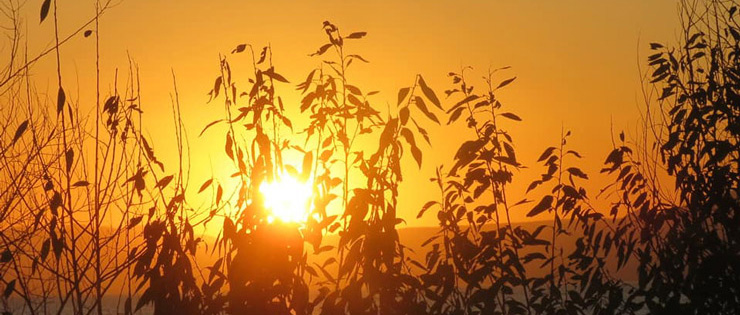 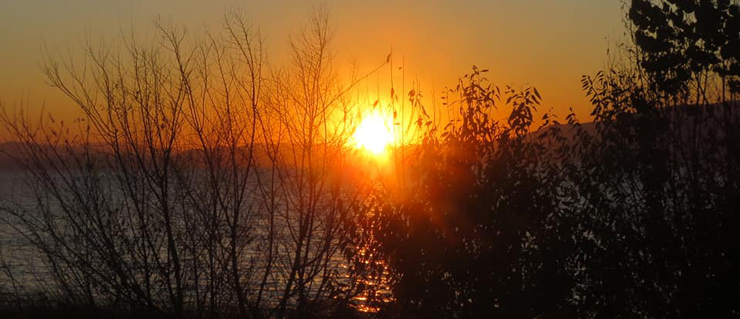 |
||||
|
|
||||
|
Moon rising in the East |
||||
